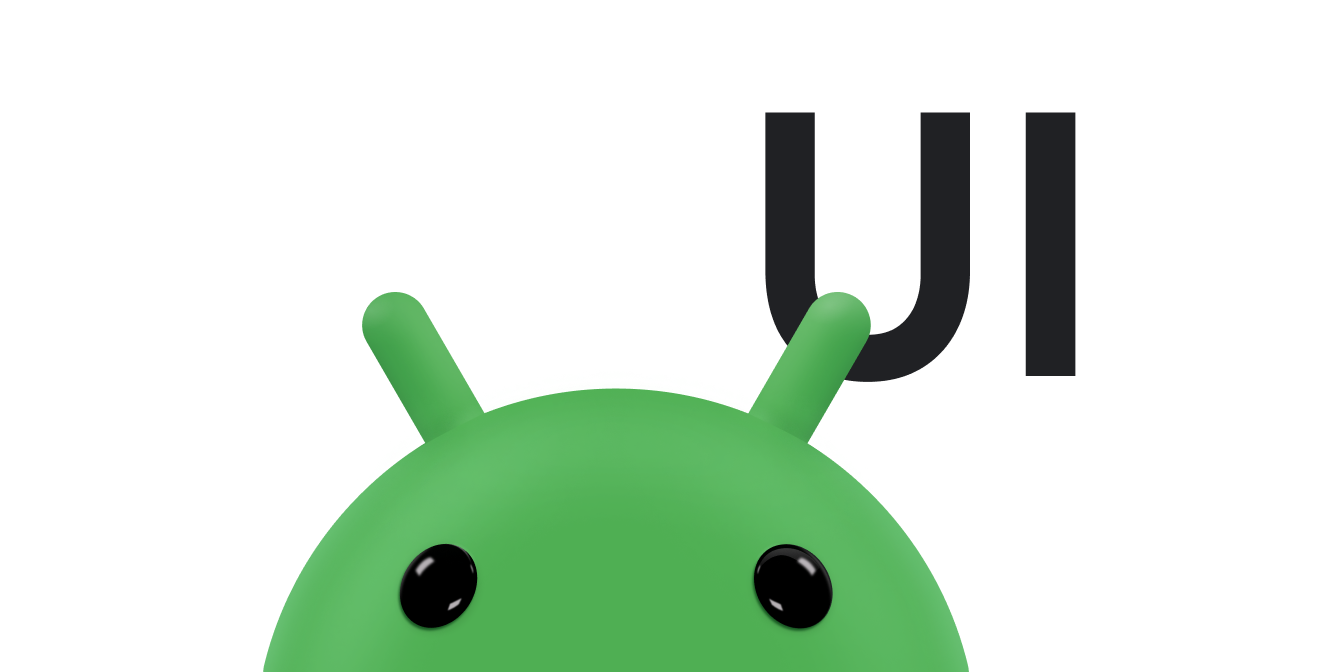เอกสารนี้แสดงวิธีอัปเดตแอปเมื่อผู้ใช้ขอให้รีเฟรชด้วยตนเอง ไม่ว่าจะเรียกให้รีเฟรชด้วยท่าทางสัมผัสการปัดหรือใช้การดำเนินการรีเฟรชของแถบการดำเนินการ
การตอบสนองต่อท่าทางการรีเฟรช
เมื่อผู้ใช้ใช้ท่าทางสัมผัสปัดเพื่อรีเฟรช ระบบจะแสดงตัวบ่งชี้ความคืบหน้าและเรียกเมธอดการเรียกกลับของแอป เมธอดการเรียกกลับจะรับผิดชอบในการอัปเดตข้อมูลของแอป
หากต้องการตอบสนองต่อท่าทางสัมผัสเพื่อรีเฟรชในแอป ให้ใช้
SwipeRefreshLayout.OnRefreshListener
อินเทอร์เฟซและวิธีของ
onRefresh()
อินเทอร์เฟซ ระบบจะเรียกใช้เมธอด onRefresh() เมื่อผู้ใช้ใช้ท่าทางสัมผัสด้วยการปัด
ใส่โค้ดสําหรับการดำเนินการอัปเดตจริงไว้ในเมธอดแยกต่างหาก โดยควรอยู่ใน ViewModel แล้วเรียกใช้เมธอดอัปเดตนั้นจากการใช้งาน onRefresh() วิธีนี้จะช่วยให้คุณใช้วิธีการอัปเดตเดียวกันเพื่อทำการอัปเดตได้เมื่อผู้ใช้เรียกให้รีเฟรชจากแถบการดำเนินการ
ในเมธอดการอัปเดต ให้เรียกใช้ setRefreshing(false) เมื่ออัปเดตข้อมูลเสร็จแล้ว การเรียกใช้เมธอดนี้จะสั่งให้ SwipeRefreshLayout นำตัวบ่งชี้ความคืบหน้าออกและอัปเดตเนื้อหาของมุมมอง
ตัวอย่างเช่น โค้ดต่อไปนี้ใช้ onRefresh() และเรียกใช้เมธอด myUpdateOperation() เพื่ออัปเดตข้อมูลที่แสดงโดย ListView
Kotlin
// Sets up a SwipeRefreshLayout.OnRefreshListener that invokes when // the user performs a swipe-to-refresh gesture. mySwipeRefreshLayout.setOnRefreshListener { Log.i(LOG_TAG, "onRefresh called from SwipeRefreshLayout") // This method performs the actual data-refresh operation and calls // setRefreshing(false) when it finishes. myUpdateOperation() }
Java
// Sets up a SwipeRefreshLayout.OnRefreshListener that is invoked when // the user performs a swipe-to-refresh gesture. mySwipeRefreshLayout.setOnRefreshListener(() -> { Log.i(LOG_TAG, "onRefresh called from SwipeRefreshLayout"); // This method performs the actual data-refresh operation and calls // setRefreshing(false) when it finishes. myUpdateOperation(); } );
ตอบสนองต่อการดำเนินการรีเฟรช
หากผู้ใช้ขอรีเฟรชโดยใช้แถบการดำเนินการ ระบบจะเรียกใช้วิธี onOptionsItemSelected()
แอปของคุณจะตอบสนองต่อการเรียกนี้ด้วยการแสดงตัวบ่งชี้ความคืบหน้าและรีเฟรชข้อมูลของแอป
หากต้องการตอบสนองต่อการรีเฟรช ให้ลบล้าง
onOptionsItemSelected() ในเมธอดการลบล้าง ให้ทริกเกอร์ตัวบ่งชี้ความคืบหน้า SwipeRefreshLayout โดยเรียกใช้ setRefreshing() ด้วยค่า true จากนั้นดําเนินการอัปเดต ทำการอัปเดตจริงในเมธอดแยกต่างหาก เพื่อให้เรียกเมธอดเดียวกันได้ไม่ว่าผู้ใช้จะเรียกให้อัปเดตด้วยการปัดหรือใช้แถบการดำเนินการ เมื่อการอัปเดตเสร็จสิ้นแล้ว ให้เรียกใช้ setRefreshing(false)
เพื่อนำสัญญาณบอกสถานะความคืบหน้าของการรีเฟรชออก
โค้ดต่อไปนี้แสดงวิธีตอบสนองต่อการดำเนินการตามคำขอ
Kotlin
// Listen for option item selections to receive a notification when the user // requests a refresh by selecting the refresh action bar item. override fun onOptionsItemSelected(item: MenuItem): Boolean { when (item.itemId) { // Check whether the user triggers a refresh: R.id.menu_refresh -> { Log.i(LOG_TAG, "Refresh menu item selected") // Signal SwipeRefreshLayout to start the progress indicator. mySwipeRefreshLayout.isRefreshing = true // Start the refresh background task. This method calls // setRefreshing(false) when it finishes. myUpdateOperation() return true } } // User doesn't trigger a refresh. Let the superclass handle this action. return super.onOptionsItemSelected(item) }
Java
// Listen for option item selections to receive a notification when the user // requests a refresh by selecting the refresh action bar item. @Override public boolean onOptionsItemSelected(MenuItem item) { switch (item.getItemId()) { // Check whether the user triggers a refresh: case R.id.menu_refresh: Log.i(LOG_TAG, "Refresh menu item selected"); // Signal SwipeRefreshLayout to start the progress indicator. mySwipeRefreshLayout.setRefreshing(true); // Start the refresh background task. This method calls // setRefreshing(false) when it finishes. myUpdateOperation(); return true; } // User doesn't trigger a refresh. Let the superclass handle this action. return super.onOptionsItemSelected(item); }


